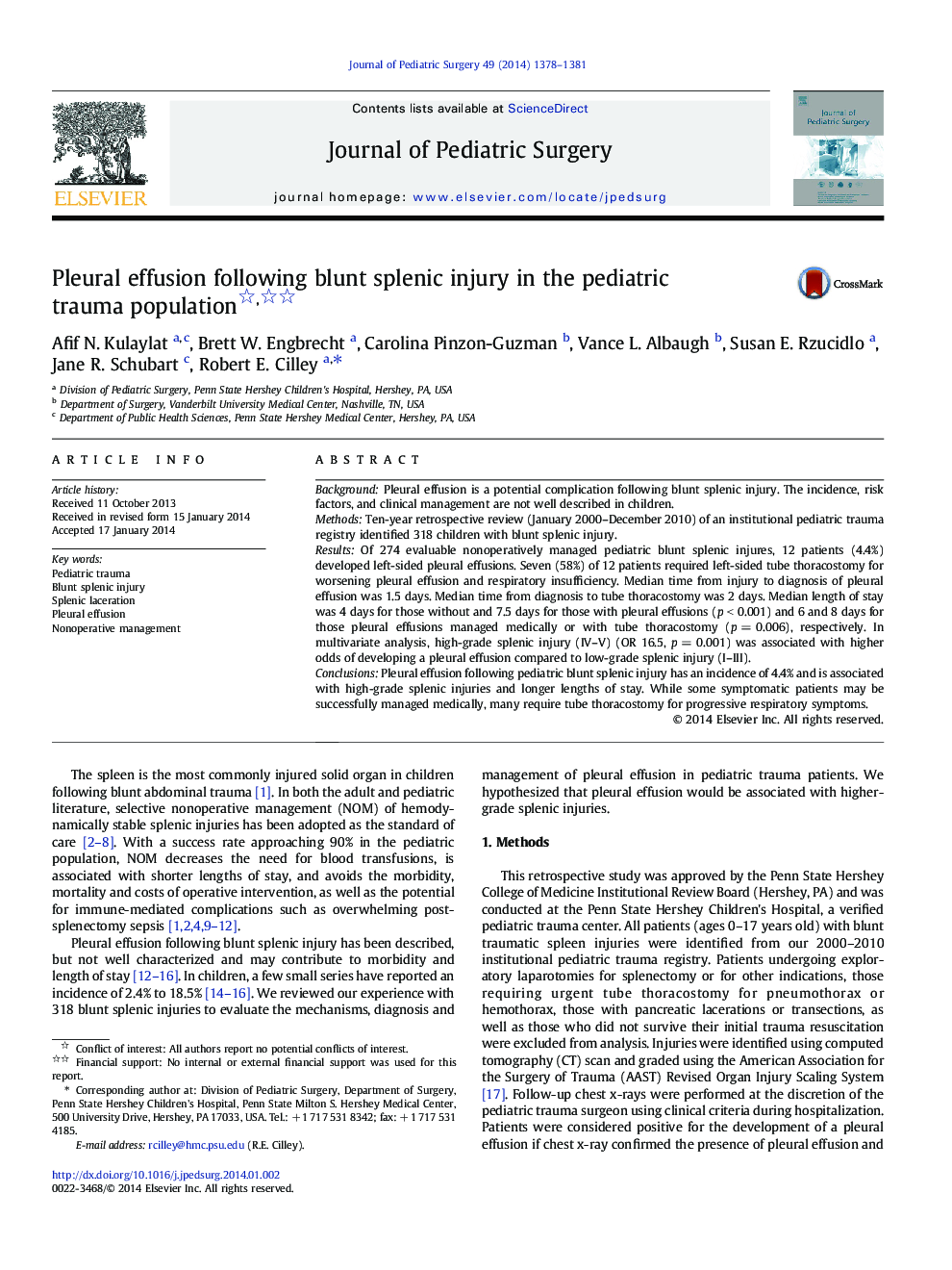| Article ID | Journal | Published Year | Pages | File Type |
|---|---|---|---|---|
| 4155814 | Journal of Pediatric Surgery | 2014 | 4 Pages |
BackgroundPleural effusion is a potential complication following blunt splenic injury. The incidence, risk factors, and clinical management are not well described in children.MethodsTen-year retrospective review (January 2000–December 2010) of an institutional pediatric trauma registry identified 318 children with blunt splenic injury.ResultsOf 274 evaluable nonoperatively managed pediatric blunt splenic injures, 12 patients (4.4%) developed left-sided pleural effusions. Seven (58%) of 12 patients required left-sided tube thoracostomy for worsening pleural effusion and respiratory insufficiency. Median time from injury to diagnosis of pleural effusion was 1.5 days. Median time from diagnosis to tube thoracostomy was 2 days. Median length of stay was 4 days for those without and 7.5 days for those with pleural effusions (p < 0.001) and 6 and 8 days for those pleural effusions managed medically or with tube thoracostomy (p = 0.006), respectively. In multivariate analysis, high-grade splenic injury (IV–V) (OR 16.5, p = 0.001) was associated with higher odds of developing a pleural effusion compared to low-grade splenic injury (I–III).ConclusionsPleural effusion following pediatric blunt splenic injury has an incidence of 4.4% and is associated with high-grade splenic injuries and longer lengths of stay. While some symptomatic patients may be successfully managed medically, many require tube thoracostomy for progressive respiratory symptoms.
